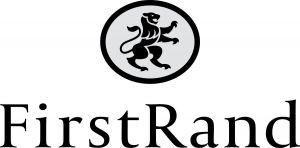
Designing and Implementing Welfare-Improving Investment Solutions for Institutions and Individuals
Presentation of the Partner

FirstRand Limited is a portfolio of integrated financial services businesses operating in South Africa, certain markets in sub-Saharan Africa and in the UK. Many of these businesses are leaders in their respective segments and markets, and offer a universal set of transactional, lending, investment and insurance products and services.
FirstRand is listed on the Johannesburg Stock Exchange (JSE) and the Namibian Stock Exchange (NSX) and is the largest financial institution by market capitalisation in Africa.
Recognised for its culture of entrepreneurship and innovation the group has a long track record of consistent growth in high quality earnings, and superior and sustainable returns for shareholders. This track record has been achieved through a combination of organic growth, acquisitions and the creation of completely new businesses.
Presentation of the Partnership
Objectives
EDHEC-Risk Institute and FirstRand Limited (FirstRand or the group) are partnering for the first time to launch a three-year research chair entitled “Designing and Implementing Welfare-Improving Investment Solutions for Institutions and Individuals” to expand the scientific literature on investor welfare-enhancing methodologies for portfolio construction in a goals-based investing framework.
Year 1 will focus on a detailed analysis of the interplay between diversification and insurance, with the aim of determining whether it is possible to achieve an improvement in investor welfare by creating a diversified portfolio of insured assets, as opposed to insuring a portfolio of diversified assets.
To answer this problem, in collaboration with the FirstRand team, EDHEC-Risk Institute will develop a comprehensive analysis of various forms of diversification strategies and various non-linear payoffs so as to measure the level of investor welfare achieved with two competing approaches as applied to different markets (equity, fixed-income, currencies, etc.). The two competing approaches are:
Designing a well-diversified portfolio of individual assets and then generating a convex payoff aimed at maximising investor welfare;
Generating a convex payoff from individual assets and mixing these non-linear asset and factor exposures in a diversified portfolio in order to maximize investor welfare.
The research chair will involve a team led by Prof. Lionel Martellini, Director of EDHEC-Risk Institute, with Vincent Milhau, Scientific Director. Albert de Wet from FirstRand Group Treasury, along with Hannes du Plessis from the group’s Rand Merchant Bank Global Markets Division, will lead a team from across the group’s business to participate in the working committee of the research chair.
Research Outputs:
September 2023
Nicole Beevers, Quantitative Strategist, Rand Merchant Bank, a division of FirstRand Bank Limited; Hannes Du Plessis, Quantitative Strategist, Rand Merchant Bank; Lionel Martellini, Professor of Finance, EDHEC Business School, Director, EDHEC-Risk Institute; Vincent Milhau, Research Director, EDHEC-Risk Institute
This article provides an explicit characterization for the optimal performance portfolio when this portfolio is used as part of a multiasset liability-driven investment strategy that may involve rebalancing. In this context, the optimal demand for risky assets can be represented as a combination of several funds, including the maximum Sharpe ratio portfolio, the minimum variance portfolio, and the portfolio that is most correlated with liabilities. The allocation to the various funds depends on the investor’s liability-driven objectives and constraints. This personalized approach to the construction of performance portfolios is somewhat similar to the precision medicine model, widely regarded as a fundamental breakthrough that marks the start of a whole new era for medical practice by proposing the customization of health care instead of a one-drug-fits-all approach.
How Financial Engineering Can Help Improve Withdrawal and Investment Decisions in Retirement
November 2022
Nicole Beevers, Quantitative Strategist, Rand Merchant Bank, a division of FirstRand Bank Limited; Hannes Du Plessis, Quantitative Strategist, Rand Merchant Bank; Lionel Martellini, Professor of Finance, EDHEC Business School, Director, EDHEC-Risk Institute; Vincent Milhau, Research Director, EDHEC-Risk Institute
Individuals retiring with a “nest egg” that they have accumulated during their working life must decide how to spend it and how to invest the unspent part of their savings. They face a complex problem because of an uncertain horizon (death time), uncertain future expenses, which can increase if a life event related to health occurs, and market risk, which can adversely affect investment returns. They face a dilemma between current and future consumption, bearing the risk of outliving their assets if they spend too much too early and being unable to support the desired lifestyle if they delay consumption more than necessary. All this makes decumulation, the process of turning capital into replacement income, a difficult problem to solve, even for recipients of the Nobel Prize in economics: Richard Thaler regards it as “a more difficult challenge than accumulation”, and William Sharpe calls it the “nastiest, hardest problem in finance”
The objective of this paper is to go beyond standard prescriptions and introduce a rigorous framework to analyze spending and investment decisions in decumulation. More precisely, authors demonstrate that substantial value can be added by applying the core principles of financial engineering and risk management to both withdrawal and investment decisions. A central idea here is that the feasibility of a spending strategy should not be based on past data, i.e. the assumption that the future will be like the past, but on simple and robust mathematical principles that are valid in all economic conditions and all regions.
March 2022
Nicole Beevers, Quantitative Strategist, Rand Merchant Bank, a division of FirstRand Bank Limited; Hannes Du Plessis, Quantitative Strategist, Rand Merchant Bank; Lionel Martellini, Professor of Finance, EDHEC Business School, Director, EDHEC-Risk Institute; Vincent Milhau, Research Director, EDHEC-Risk Institute
This paper introduces a continuous-time framework for portfolio optimization that differs from Merton’s (1973) seminal model in two ways. First, optimization does not apply to the entire portfolio of an investor, but only to the “performance-seeking portfolio” (PSP) managed in isolation from the remainder of the portfolio, which is invested in other building blocks that are taken as given, e.g. cash in portfolio insurance or the liability-hedging portfolio in a liability-driven investing strategy.
The analysis conducted in this paper suggests that investors would benefit from the availability of such “precision investing portfolios” tailored to their specific circumstances, as opposed to being left with portfolios that focus on standalone performance. Just like modern healthcare seeks “precision medicine” tailored to a patient’s personal situation, as opposed to using the same treatment for everyone, “precision investing” departs from the Sharpe ratio maximization paradigm to seek optimal PSPs that explicitly take into account an investor’s preferences and constraints. As such, it helps shift the emphasis away from investment products towards genuine investment solutions.
Measuring and Managing the Opportunity Cost of Downside Risk Protection
November 2021
Nicole Beevers, Hannes Du Plessis, Lionel Martellini and Vincent Milhau
This article studies the implications of the choice of the underlying asset on the frequency and magnitude of floor breaches and on the loss of performance associated with the protection against downside risk; it considers in particular the use of a diversified portfolio of stocks as opposed to a single stock. The authors find that gap risk is more prominent when insurance is applied to a stock than to a portfolio, but it can be reduced by implementing time-invariant portfolio protection or by letting the multiplier decrease when volatility rises.
Diversification and insurance: which should come first
June 2021
By Nicole Beevers, Quantitative Strategist at Rand Merchant Bank, a division of FirstRand Bank Limited, Hannes Du Plessis, Quantitative Strategist at Rand Merchant Bank, a division of FirstRand Bank Limited, Lionel Martellini, Professor of Finance, EDHEC Business School, Director, EDHEC-Risk Institute; and Vincent Milhau, Research Director, EDHEC-Risk Institute
Results show that it matters whether insurance or diversification comes first. The big picture is that diversification before insurance tends to perform better than insurance before diversification in the long run, thereby confirming the aforementioned intuition about reducing the opportunity cost, but there are exceptions to this finding, since an equally weighted portfolio of CPPI-like payoffs outperforms a CPPI portfolio based on an equally weighted portfolio. Ultimately it seems that no one approach unambiguously prevails over the other, with respect to whether diversification or insurance should come first.

